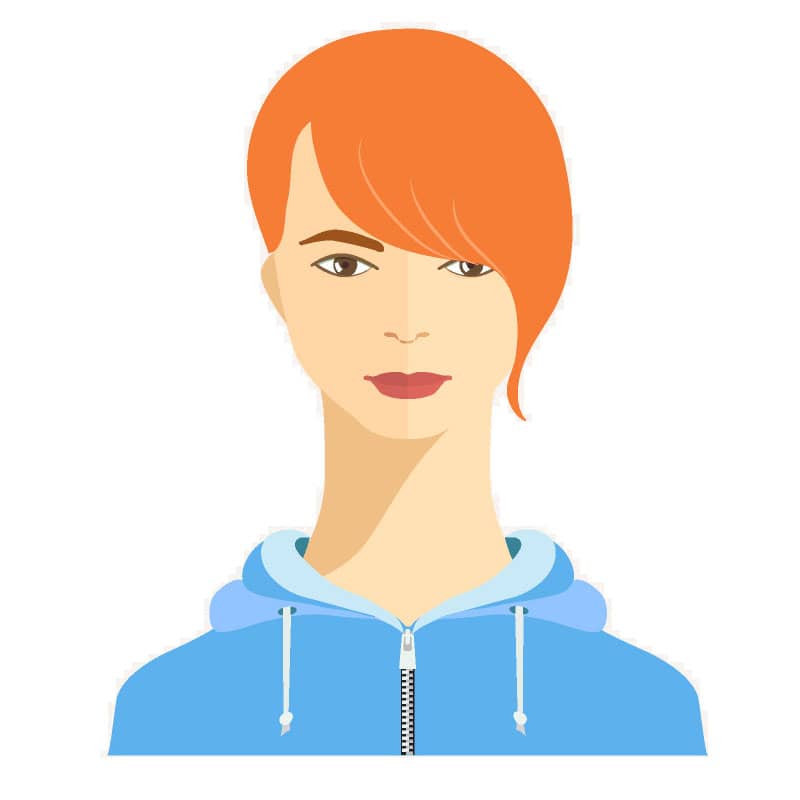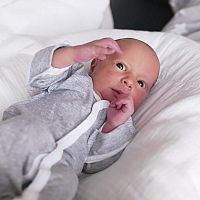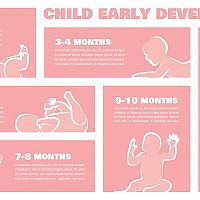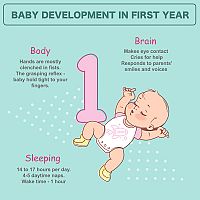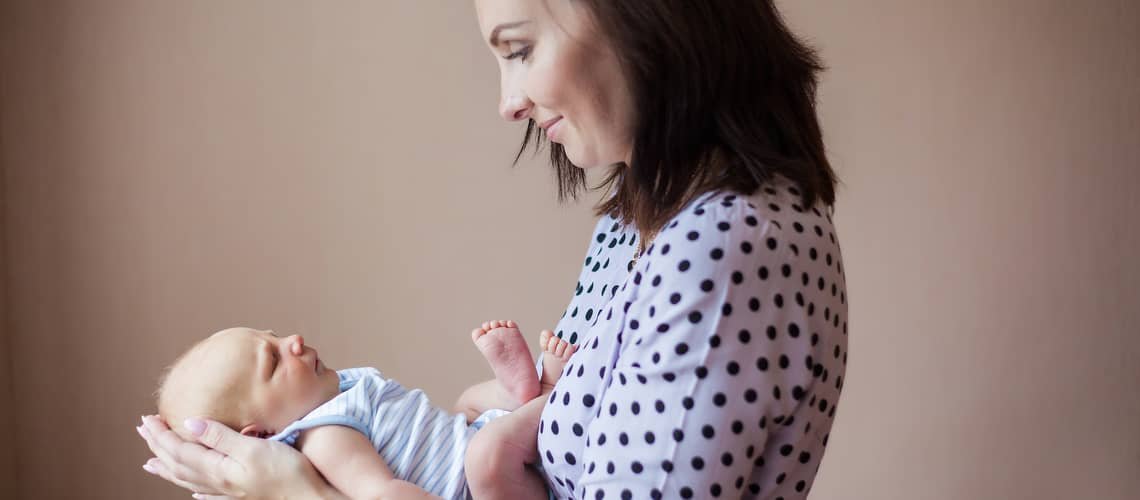
Month-old baby - what can a 4-week-old baby do and how does it perceive his mother?
From desire to anticipation to a magical moment. The birth of a child is one of the most emotional events in the life of a mother (partners). Think back to the moment you learned that you carry a new life under your heart. Nine months have gone by unexpectedly fast and know that time cannot be slowed down and your newborn will be a new person week by week. All physical and mental changes and progress will take place right before your eyes. Therefore, it is good to know what development of the newborn you can expect after weeks. How does a baby perceive its mother and what can a 1-month-old baby do?
Despite the fact that many mothers find out in advance what their child should know, manage and perceive at a certain age, put the prescribed tables aside. Of course, certain development milestones should not be ignored, but excessive fixation on all pre-structured points according to the week or month is not correct. Each child is individual and while he lags behind in one stage of development, he advances in another or starts to develop naturally later. Monitor the psychomotor development of the child, but do not fixate on everything you read or hear that this is exactly how a baby should be. Below you can read certain characteristics that are typical for 4-week-old babies, but not exclusively defining.
The newborn is at home
The status of a newborn belongs to your little one until the 28th-30th day of life. After this term, the newborn becomes a "big" infant, which will even more intensively determine the course of the entire household. After you bring home a wrapped baby in a warm blanket, you need to prepare for a lot of changes. They will not only concern you, but your baby must also get used to the new regime within a few days and weeks. Over the course of 4 weeks, the little "baby" will go through significant changes. You may not realize it as a parent, but the creature you look at with love was until recently used to living in mild darkness and moving in amniotic fluid. It was nourished through the placenta and umbilical cord, did not wear diapers and did not even need to suck breast milk. What does a month-old baby go through during the first weeks?
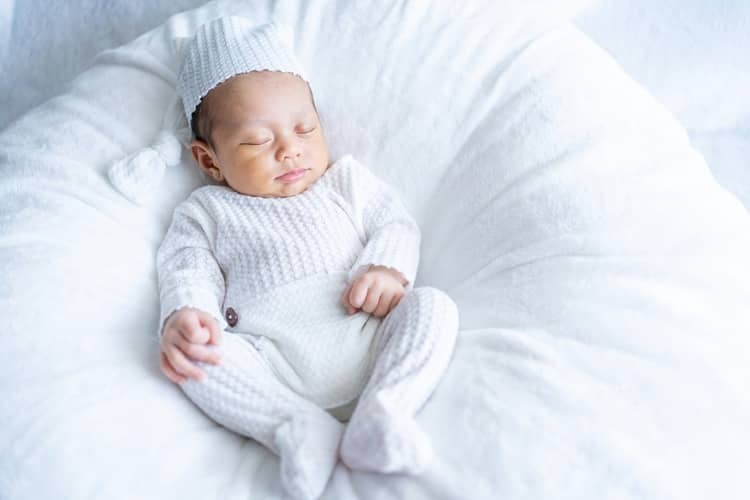
First visit to the pediatrician
If correct, the first initial check-up with the pediatrician should take place within 3 days from the moment you brought the baby home from the maternity ward. The reality may be slightly different with the number of days, but a visit to the pediatrician should be a matter of course and certainly should not be delayed. In addition to establishing the necessary documentation, the doctor will start keeping your baby's health card, where all examinations and findings will be recorded. Do not forget to take a report from the maternity hospital with you.
During the first preventive check-up, the doctor weighs and measures the baby (head and chest circumference, length), heart activity and breathing are observed. The doctor also evaluates the psychomotor development of the baby and observes possible neurological deviations. Shortly after birth, the doctor also checks the healing of the navel of the newborn and monitors the possible occurrence of newborn jaundice, newborn acne or other typical diagnoses. Based on the initial data, it will be possible to monitor further progress in physical and mental development. Later on, the child will undergo regular preventive check-ups at the pediatrician, while the intervals of preventive checks will gradually be extended. With great probability, the baby's doctor will prescribe supportive vitamin therapy after the first examination. Specifically, vitamin D (note for proper bone development) and vitamin K (note prevention of bleeding disease in newborns, which can cause damage to the central nervous system).
Psychomotor development of the child in the 1st month
What can a 4-week-old baby do? You would be surprised, but already after the first month, a significant shift in psychomotor development can be observed in the child. Although this defenseless creature is constantly lying down, the first month means that the baby begins to kick with its legs and move its arms. His arms are bent and clenched into fists. Gradually, however, the baby should be able to release the fingers and open the palm for a short time. If you put a finger in his palm, the grasping reflex is manifested. The primary position is lying on the back. The child can raise the head slightly and turn it for various stimuli. Lying on the stomach is unnatural for a child, but under supervision the child can handle it. At the same time, turning the head in this position strengthens the back and neck muscles. Movements are still uncoordinated and uncontrolled in the 1st month of the baby.
In terms of perception, he can perceive his mother's face and react to strangers' faces. A big reward can be the movement of the corners of the mouth indicating a smile or a wink. It can be less pleasant that he can cry, and profusely. However, it is a communication tool with which it expresses its demands. Last but not least, he is capable of feeding and has developed a sucking reflex. He can recognize contrasting pastel colors and their shades. However, color vision is not yet complete.
These initial manifestations are a sign of development in the first month. Don't worry if some of them appear later. Each child develops at his own pace. If you have concerns about your baby's psychomotor development, contact your pediatrician. Through regular preventive inspections, possible deviations or deficiencies can be detected in time and an adequate solution can be chosen. There are also suitable exercises and massages that help the child to optimal psychomotor development in the area of fine and gross motor skills.

Breastfeeding a newborn
Immediately after birth, it is necessary to attach the baby to the mother's breast. The goal is to get the baby to develop a sucking reflex. This process is not always completely automatic, and in many cases problems with the baby's latch appear during breastfeeding. In the case of problems with breastfeeding, milk production may also slow down. However, it's all about the correct breastfeeding technique and positioning. A pediatrician or lactation consultant, or a more experienced mother, can help. During the first 2 to 3 days, the baby receives colostrum from the breast, which is the first milk with a high content of nutrients supporting immunity and growth factor. Gradually, this thick mother's milk turns into standard milk and represents the basic source of nutrients for the child.
Many parents immediately wait for burping after feeding. This phenomenon occurs in many breastfed babies, because during breastfeeding the baby absorbs air particles along with breast milk. However, burping is not necessary in all circumstances. After a meal, a 1-month-old baby may hiccup, which is also not a fault. If the baby spits out a little milk after feeding, nothing is wrong. There may have been too much milk and it simply rose to the top during the digestive process.
In newborns, the so-called infantile colic. It is a condition in which the child persistently cries for at least 3 hours a day, at least 3 days a week, and the condition is repeated for a period of 3 weeks. Infant colic is sometimes a mystery, because the baby thrives and gains weight otherwise. Gradually, however, the baby may develop symptoms that may indicate other problems. Symptoms of infantile colic usually disappear within 3 to 6 months of age. The cause of colic can be flatulence - flatulence, reflux, immaturity of the digestive system, improper handling of the baby, predominance of foremilk, but it can also be allergies to a certain food component or, in the case of artificial milk, to cow's protein.
Bathing and stool in a 4-week-old baby
During the first four days, you may encounter black stools. It is about the so-called colostrum, which contains bile, amniotic fluid and mucus. Yellow-mustard to greenish-yellow stool should gradually appear in breastfed children. Such a color is basically a sign of healthy stool. The smell of the stool is penetrating, due to the dairy diet. A child should poop at least once a day. It is not an exception if you change the baby several times a day. It often happens that in the first month the stool is less regular, for example every 2 to 3 days. Check the consistency of the stool, whether it is infantile constipation or diarrhea. You should pack diapers wide - for proper joint growth.
Bathing every second to third day is sufficient, if the child is not heavily soiled. Always clean the genital area when changing diapers. Only clean water is sufficient to wash. Creaming or oiling is not necessary. It is recommended only if the baby has too dry skin.
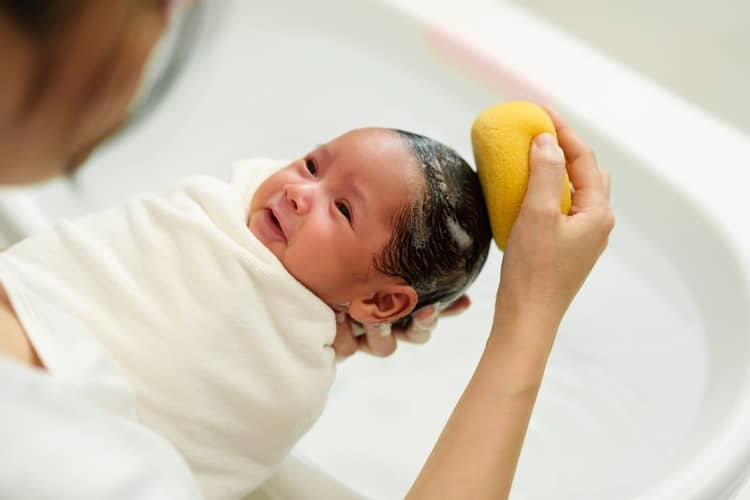
Hearing and sight of the newborn
Newborns have well-developed hearing from birth. They can remember their mother's voice and even respond to sounds. However, they react negatively to loud vocalizations and cause fear in them. Newborns are "worse" with their eyesight. They are very short-sighted and see only on the so-called mother's distance - 20 to 30 cm. They can perceive the mother's face during breastfeeding, although their vision is hazy and blurry. This is also the reason why they often direct their gaze upwards. If you are at the optimal distance, the child can move his eyes and turn his head. These movements are still uncoordinated, so squinting may appear. A child under 2 weeks does not distinguish colors. Only in this period does he begin to perceive different color shades, but full color vision develops only in the 4th month.
Sleep, games and communication
Newborns sleep most of the day. The baby should sleep exclusively on its back. The position on the stomach is not entirely suitable for sleeping. Lying on your side in a ball and on your back are considered the most natural positions for sleep. During the day, within their biorhythm , they have typical sections when they are awake. It is then that they demand that their needs and requirements be met. Changing diapers, feeding, necessary hygiene, but also communication. Communication in the form of eye contact and touch is essential for gaining mutual trust and strengthening the bond. Even by speaking, you significantly stimulate his senses, because he perceives your voice very carefully. Do not be afraid to touch the little one, smile at him and talk to him, this is the only way to achieve initial mutual interaction.
At this age, the baby is not yet able to communicate other than by crying, which manifests its dissatisfaction (hunger - feeding, cold - changing diapers, tiredness - sleep). As for games, it is not possible to talk about typical playing during this period, it is enough if you talk to the baby, grab his hands and feet and make eye contact with him. Playing lullabies is a little extra, but your calm voice can be very soothing when lulling you to sleep. In addition, during all actions from changing diapers to putting them to sleep, you stimulate the child and offer him tactile, auditory, visual or emotional stimuli. Cultivate a bedtime ritual and know that you will be grateful for it later. Before going to bed, bathe the child, change the diaper, feed him, let him burp and then put him to sleep. Always put the child to sleep in the dark or with dimmed light. Don't forget the positioning to prevent the header from collapsing.

The most frequent questions - FAQ
Are you interested in the baby's psychomotor development at 4 weeks? How does a newborn perceive the world around him? How does he see and demand games at such a young age? A 1-month-old baby goes through a lot of changes in an unknown world , with which he has to cope. The development of the baby during this period has its own laws, which it is advisable to follow. In any case, it is still true that every child is different. What advice and recommendations do you have for expectant mothers in childcare during this period? We will be happy if you express your opinions and provide your own experiences regarding the development of a newborn after weeks to the 1st month.
How does a newborn see?
How does a 2-week-old baby play?
How does the baby perceive the mother?
In what position should a newborn lie?
Gallery
Pridať komentár
